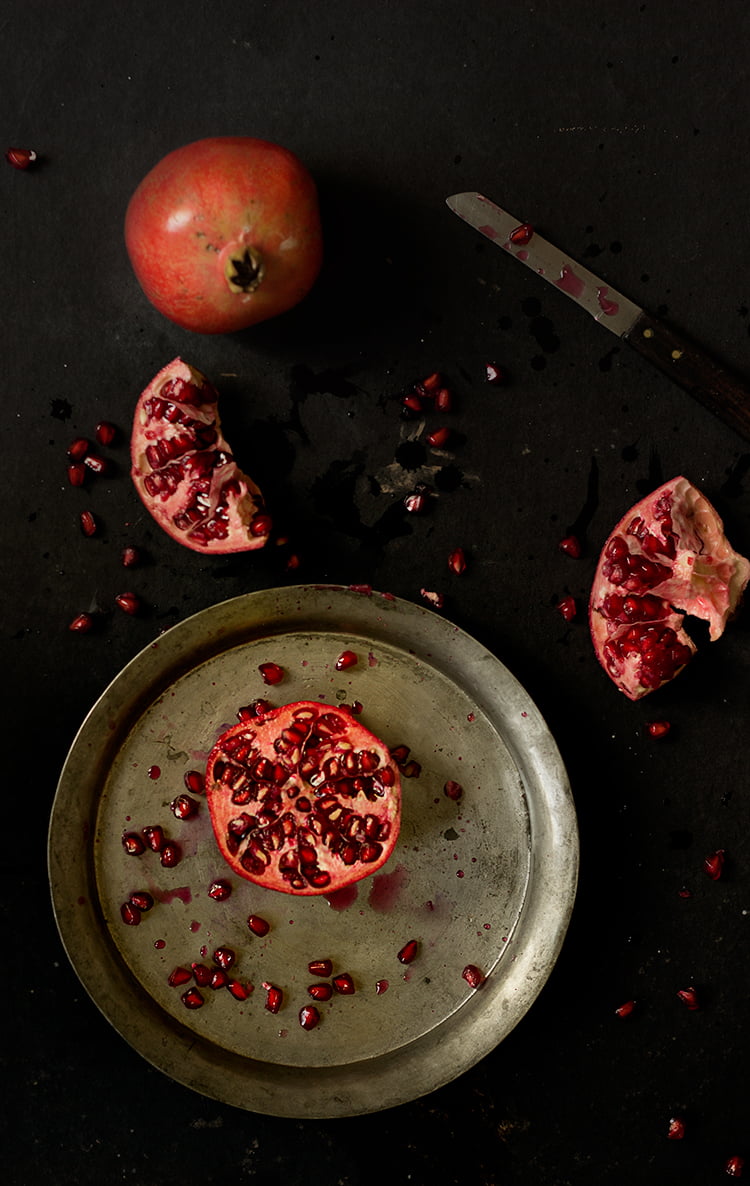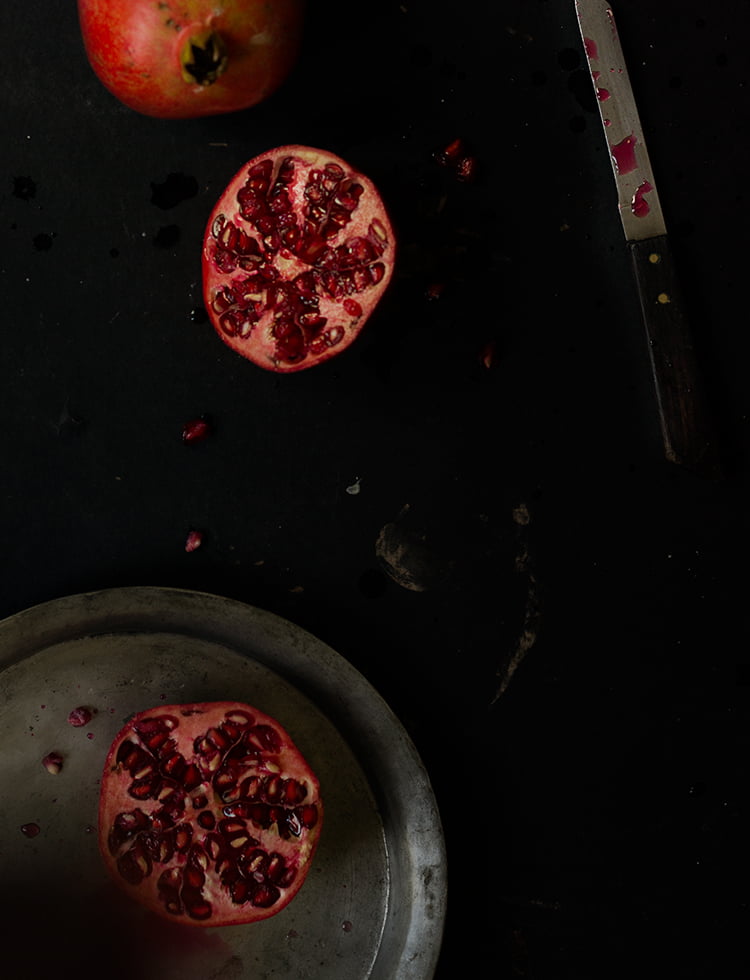How it looks: The jewel-like seeds inside the pomegranate come in a variety of colors from white to dark red. While the outer skin of the fruit ranges in colors from orange, yellow, red, or even purple at times. The seeds are held inside the outer cover of the pomegranate protecting and holding it together.
What is the best season: Pomegranate trees need ample sunlight and dry weather for them to grow. The best season to find fresh pomegranates is October to March.
How to choose: The outer thick, fibrous shell protecting the seeds within needs to be bruise-free and bright in color. This orb is round when the fruit is unripe and as the fruit ripens the seeds spread and change shape from round to square-round. One should look for bigger, firmer, and heavier whole fruit, as they will hold more juicy seeds.
You can use dried pomegranate seeds to give a nice and deep color to chole in a natural way.

Why to eat: Pomegranate is rich in antioxidants which help fortify the immune system of the body. The anti-inflammatory properties help lower risks like cancer by slowing cancer cell growth and heart disease by lowering blood pressure. The formation of kidney stones is also lowered by the consumption of this fruit. It is an iron-rich fruit and vitamin C, making iron assimilation in the body easy.
Where to find: The fruit is majorly a Middle Eastern, Indian subcontinent native due to the need for ample sunlight and warm weather. Other parts of the world with warm weather conditions in particular seasons also grow pomegranates.

When to eat: The best time to have pomegranate seeds is early morning on an empty stomach. The fruit helps the digestive system speed up digestion throughout the day. Having it before or after workouts helps energize the body for exercise and reduce stress and inflammation post-workout. As a mid-meal snack as it is low on calories and energy giving, a refreshing snack option. One should avoid having it before bed as it may interfere with sleep due to high fiber content causing bloating.
How to eat: The pomegranate seeds garnished over any preparation add to their presentation and nutrition profile. The seeds can be eaten raw, as a garnish, and can be made into a smoothie, juiced, or added to salad. The crimson color and tangy-tart taste of this juice add a twist to drinks made with it.

What Ayurveda says: Ayurveda refers to pomegranate as ‘Dadima’ for its multi-nutrient content. The fruit helps maintain digestive health and optimum blood levels. All three doshas mentioned in Ayurveda can be balanced by the appropriate consumption of fruit at the right time.
Lifespan: The fruit lasts 1 to 2 weeks when uncut, kept outside, away from heat at room temperature, or 3 to 4 weeks when refrigerated. Once seeds are removed, they can be stored in the fridge for a week and around 3 months in the freezer.

Amazing Facts: Pomegranate has thrice more antioxidants than green tea. Flower incisions cut on pomegranate skin makes it easy to deseed with a gentle tapping on the skin. The peel of pomegranate is known to help cure many health issues. The peel is cleaned and dried to be used in powdered form.
